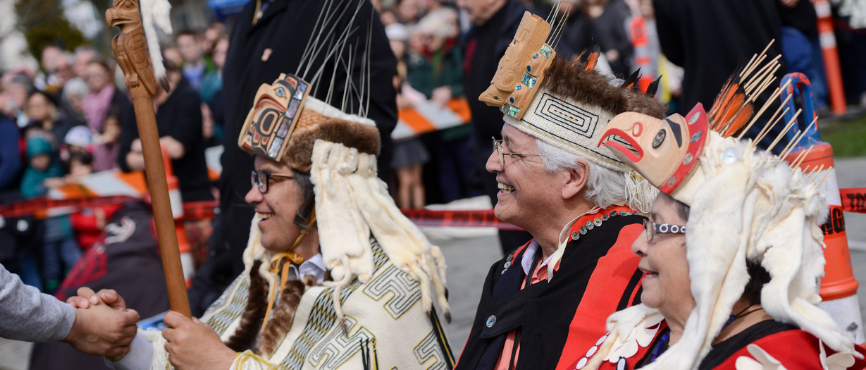
This month, in honour of Orange Shirt Day and the newly introduced National Day of Truth & Reconciliation, the VPFO’s EDI Committee has been sharing a series of blogs to drive awareness of the legacy of residential schools and to help us all foster a commitment to reconciliation.
In the past few weeks, we’ve looked at the Truth and Reconciliation Commission of Canada (TRC) Calls to Action, the United Nations Declaration for the Recognition of Indigenous Peoples (UNDRIP), and UBC’s commitment to truth and reconciliation.
As we approach September 30, we’ll wrap up this series with a deeper dive into the history and meaning behind Truth & Reconciliation and Orange Shirt Day.
Why is September 30 significant?
September 30 is National Day for Truth and Reconciliation, also known as Orange Shirt Day. On this day, we wear orange shirts in the spirit of healing and reconciliation.
The date of September 30 was chosen because it was the time of year when Indigenous children were forcibly removed from their families, and denied access to their cultures and languages.
Originating from the real-life experience of Phyllis Webstad, Orange Shirt Day was created in 2013 as an opportunity to discuss the intergenerational impacts of residential schools and honour the healing journey of residential school survivors. Residential schools are not far in the past, with the last one closing only 25 years ago.
This year, in response to one of TRC’s calls of action, the federal government designated September 30 as a National Day for Truth and Reconciliation. To learn more about the TRC and its Calls to Actions, please read the first part of this series.
What does truth and reconciliation mean in Canada?
Understanding our country’s history and treatment of Indigenous people is an important first step toward reconciliation between Indigenous and non-Indigenous peoples.
In order for reconciliation to happen in Canada, there has to be “awareness of the past, an acknowledgement of the harm that has been inflicted, atonement for the causes, and action to change behaviour.”
One of the most important roles of the TRC is the education of the Canadian public. Since 2010, the TRC has been collecting survivor testimonies and official records and has worked to make this information public. In addition to giving Indigenous peoples the public acknowledgement for the injustice perpetrated against them, this process has also led to meaningful dialogues and created awareness of the change needed in Canada.
What can you do on September 30?
UBC and the VPFO are committed to advancing Indigenous human rights through truth and reconciliation. On September 30, we invite you to listen with open ears to the stories of survivors and work towards understanding the truth and embracing the path to reconciliation.
To learn more about UBC’s commitment to truth and reconciliation, please read part three of this series.
Here are some relevant resources:
- UBC Beyond: 3 things you might not know about Orange Shirt Day
- UBC Beyond: 6 Ways to deepen your understanding of Indian Residential School History
- UBC Indian Residential School History and Dialogue Centre (IRSHDC): Orange Shirt Day Teaching and Learning Resources
- Historic Canada: Residential Schools in Canada: A Timeline (video)
Share your thoughts with us on this digital jamboard